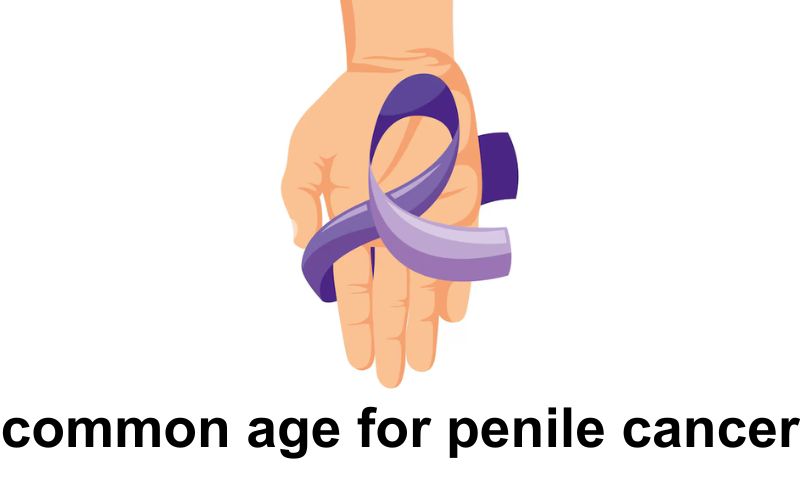Penile cancer is a rare form of cancer that affects the tissues of the penis. It is more commonly diagnosed in men aged 50 and older, but it can develop in younger men as well. The average age of Penile cancer diagnosis typically ranges from 60 to 70 years, though it varies depending on factors such as geographical location, race, and the presence of certain risk factors. This cancer is relatively uncommon, especially in developed countries, but it remains a significant concern in other parts of the world, particularly in regions where health education and access to healthcare may be limited.
Risk Factors and Age
One of the most notable aspects of penile cancer is the age at which it is commonly diagnosed. The likelihood of developing penile cancer increases as men age, particularly after 50 years of age. This can be attributed to several factors:
1. Age-Related Changes in the Immune System:
As men age, their immune system tends to weaken, which can make them more susceptible to infections and diseases, including cancer. The body may also have a harder time fighting off the human papillomavirus (HPV), which is a key factor in the development of penile cancer. Older men who have been infected with HPV may be at higher risk of developing penile cancer later in life.
2. Chronic Inflammation:
Conditions like phimosis (a condition where the foreskin is too tight to be pulled back over the head of the penis) or balanitis (inflammation of the glans of the penis) can lead to chronic inflammation in the penis. This persistent irritation and inflammation can increase the risk of cancer over time, and such conditions are more likely to occur as men age.
3. Sexual Practices and HPV Infection:
HPV infection is one of the primary risk factors for penile cancer. The risk of HPV infection increases with the number of sexual partners a man has had throughout his lifetime. HPV is also more likely to be contracted during younger ages, but the virus can stay dormant in the body for years before causing complications like penile cancer. As a result, men who were infected with HPV in their youth may not develop cancer until much later in life.
4. Smoking:
Tobacco use is another major risk factor for penile cancer. The carcinogens in tobacco can increase the likelihood of developing cancer in any part of the body, including the penis. Smoking is particularly harmful to the penile tissues, and studies have shown that men who smoke are at a significantly higher risk of developing penile cancer compared to non-smokers. Since smoking is more common in middle-aged and older men, this adds to the overall risk in these age groups.
Younger Men and Penile Cancer
Though penile cancer is more commonly diagnosed in older men, younger men can also develop the disease, albeit at a much lower frequency. Penile cancer in younger men tends to be more aggressive and is often diagnosed at later stages, which may result in poorer outcomes. In these cases, the cancer is often linked to high-risk HPV infections, especially HPV types 16 and 18, which are known to cause cancer in both men and women.
The younger population may not always be aware of the risk factors for penile cancer or may ignore symptoms such as changes in the appearance of the penis or persistent sores, which can delay diagnosis. However, it is crucial for men of all ages to be aware of the signs and symptoms of penile cancer and to seek medical advice promptly if they notice any abnormalities.
Geographical Variation
The incidence of penile cancer varies significantly by geographic region, which in turn influences the average age at diagnosis. For instance, penile cancer is more prevalent in developing countries, particularly in areas of Africa, Asia, and South America. In these regions, the average age of diagnosis may be younger than in developed countries due to factors such as limited access to healthcare, lower rates of circumcision, and higher rates of HPV infection.
In developed countries like the United States and much of Europe, the incidence of penile cancer is lower, and men are more likely to be diagnosed at an older age. This is partly due to better hygiene, healthcare access, and widespread circumcision practices, all of which help reduce the risk of penile cancer. The difference in incidence by region highlights the importance of healthcare infrastructure, prevention programs, and education in the fight against penile cancer.
Survival Rates and Prognosis
The prognosis for penile cancer largely depends on the stage at which it is diagnosed. Early-stage penile cancer, when it is confined to the outer layers of the skin or the surface of the penis, is generally treatable and has a good prognosis. However, if the cancer has spread to nearby lymph nodes or other organs, the prognosis becomes much more uncertain, and survival rates decrease.
Older men diagnosed with penile cancer may face additional challenges due to pre-existing health conditions that could complicate treatment. For example, older patients may have cardiovascular diseases, diabetes, or other comorbidities that make surgery or chemotherapy more risky. These factors can also influence the overall survival rate and quality of life following treatment.
Younger men diagnosed with penile cancer generally have a better prognosis, especially if the cancer is detected early. Since they tend to be in better overall health, younger patients are more likely to tolerate aggressive treatments and recover well. However, because penile cancer in younger men may be more aggressive, early detection is even more critical in this demographic.
Prevention and Awareness
The best way to reduce the risk of penile cancer, regardless of age, is through prevention and early detection. Preventive measures include:
- HPV Vaccination: Vaccinating boys and men against HPV can help significantly reduce the risk of penile cancer, particularly since HPV infection is the primary cause of this cancer. The vaccine is most effective when administered before exposure to the virus, ideally in adolescence.
- Circumcision: Circumcision, the removal of the foreskin, is thought to reduce the risk of penile cancer by improving hygiene and reducing the likelihood of HPV infection. Circumcised men are less likely to develop conditions like phimosis and balanitis, which are risk factors for penile cancer.
- Safe Sexual Practices: Using condoms and limiting the number of sexual partners can reduce the risk of contracting HPV and other sexually transmitted infections, thus lowering the likelihood of developing penile cancer.
- Regular Check-ups: Men, especially those over 50, should undergo regular check-ups that include screenings for genital abnormalities. Early detection of penile cancer significantly improves the chances of successful treatment.
Conclusion
Penile cancer is most commonly diagnosed in men aged 50 and older, but younger men can also be affected, especially those with risk factors like HPV infection, smoking, and poor hygiene. Understanding the risk factors and symptoms of penile cancer, as well as taking preventive measures, can help men of all ages reduce their risk and increase their chances of early detection. Since penile cancer is relatively rare, awareness and education remain key components in the fight against this disease, ensuring that men receive the necessary care and attention to address this potentially life-threatening condition.
Read more – (click here)






